 |
|








Zygoma Implants



for extreme upper jaw cases with severe bone resorption
language |
l |
THAI |
|
|
X-Ray Gallery
@Silom Dental Building
(Click on image for enlarge)
Successful
prosthetic rehabilitation of patients with
severe bone resorption in the maxilla is often
compromised by the inability to obtain sufficient
anchorage for the prosthesis. Such patients seek
a permanent solution that involves minimal
surgical procedures and reduced treatment time,
without sacrificing their expectations of
success.
Today, the most common way of
treating such patients is with grafting
proceduces are currently being used with widely
varying degrees of success and no clear
consensus among surgeons as to the expected
results.
The development of the Zygoma implant
presents a unique alternative for rehabilitating
the severely resorbed maxilla, with only one
surgical procedure and without the need for
grafting.
 |
Patient requirements |
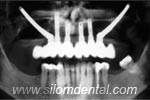 |
Clinical situation |
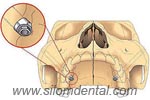 |
Dental implant experience |
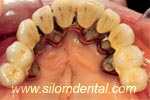 |
Treatment Planning Factors to consider when planning a Zygoma-implant patient: Clinically symptom free and pathology free sinuses Appropriate radiographic imaging of the maxillary sinuses and zygoma regions Possibility of placing at least two ordinary implants in the frontal maxilla Possibility of controling or decreasing bending moments by cross-arch stabilization, decreased cantilevers and balanced occlusion |
Upper Zygoma/Lower All-on-4

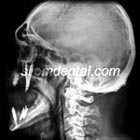
Upper Zygoma Implant


Upper Zygoma


Installing the Zygoma implant
2. surgery and implant installation:
The step is surgery and installing the Zygoma implants, ensure that the implant is guided along the correct path of insertion through the sinus.
|
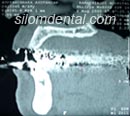 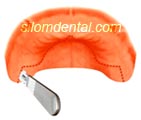  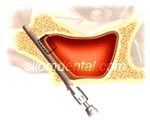 |
   
Stability = in the bridge framework |
   
Position of Zygoma implant |
HOME
l SERVICE
l DENTISTS
l TECHNOLOGY
l FACILITIES
l ABOUT US
l SITE MAP
PROMOTION
l PRICE&DURATION
l CONSULTATION
l FAQ
l LINKS
l MAP
l TESTIMONIALS
l OUR LAB
l RESOURCES
DENTAL BRACES
l LASER TEETH WHITENING
l IMPLANT DENTISTRY
l ENDODONTICS
l OPERATIVE DENTISTRY
l SEDATION DENTISTRY
COSMETIC DENTISTRY
l PROSTHODONTICS
l PERIODONTICS
l ORAL SURGERY
l PAEDODONTICS
l GP & ORAL EXAM
l OCCLUSION
DENTAL OFFICE
l DENTAL CLINIC
l COSMETIC DENTISTRY
l COSMETIC DENTIST
l TEETH BLEACHING
l TOOTH WHITENING
DENTAL CROWNS
l DENTAL IMPLANTS
l DENTAL TREATMENT
l DENTAL IMPLANT
............................................................................................................................. Copyright© 2004 SILOM DENTAL BUILDING. All Rights Reserved.
Local Call : 0 2636 9092-5, International Call : (+) 66 2636 9091, (+) 66 2636 9097
e-mail :silomdental@silomdental.com
Dental Implant, Dental Implants, Implant, Dental Implant Bangkok, Dental Implants Thailand, Implant Dental Center, Implant Bangkok Thailand




